- News
- Reviews
- Bikes
- Accessories
- Accessories - misc
- Computer mounts
- Bags
- Bar ends
- Bike bags & cases
- Bottle cages
- Bottles
- Cameras
- Car racks
- Child seats
- Computers
- Glasses
- GPS units
- Helmets
- Lights - front
- Lights - rear
- Lights - sets
- Locks
- Mirrors
- Mudguards
- Racks
- Pumps & CO2 inflators
- Puncture kits
- Reflectives
- Smart watches
- Stands and racks
- Trailers
- Clothing
- Components
- Bar tape & grips
- Bottom brackets
- Brake & gear cables
- Brake & STI levers
- Brake pads & spares
- Brakes
- Cassettes & freewheels
- Chains
- Chainsets & chainrings
- Derailleurs - front
- Derailleurs - rear
- Forks
- Gear levers & shifters
- Groupsets
- Handlebars & extensions
- Headsets
- Hubs
- Inner tubes
- Pedals
- Quick releases & skewers
- Saddles
- Seatposts
- Stems
- Wheels
- Tyres
- Health, fitness and nutrition
- Tools and workshop
- Miscellaneous
- Buyers Guides
- Features
- Forum
- Recommends
- Podcast
feature
 Cycle commuting mistakes and how to avoid them Feb 2024
Cycle commuting mistakes and how to avoid them Feb 2024Cycle commuting mistakes and how to avoid them — our top tips for hassle-free rides to and from work
Commuting to and from work by bike is a cost-effective alternative to driving or using public transport, often resulting in quicker travel times due to less time spent sitting in traffic or trying to find a parking space. It also helps to promote your physical health and contributes to reducing carbon emissions. However, it’s easy to fall into pitfalls that will make your ride less enjoyable and potentially dangerous. Here are some of our top tips for hassle-free rides to and from work.
1. Not carrying spares
Punctures are an unfortunate reality of cycling, and it’s important to be prepared for them, especially during your daily commutes if you have a meeting to get to at 9 am. You need to carry a spare tube, some tyre levers and a pump/CO2 canister to deal with it, even if you’re riding on tubeless tyres.
A multi-tool is also a must-have as it can address various issues that could arise during your commute. When choosing a multi-tool, make sure it has all the functions you need for your bike, including any sneaky Torx heads.
Carrying these essentials doesn’t need to take up a lot of room, especially with compact and lightweight options like TPU inner tubes available. Simply put them in your backpack, saddlebag or pannier and leave them there for whenever you need them.
2. Poor route planning
The route that you take to work will very much depend on where you live and where you’re heading but it’s worth considering the traffic volume, terrain and cycle infrastructure when planning your route to make it as stress-free as possible.
The shortest route may not always be the best choice as it could include the most elevation or the busiest sections. It’s worth familiarising yourself with your planned route, perhaps by riding it at the weekend before your first commute. You can also vary your route from day to day to keep things interesting.
Sites such as Cycle Streets and Komoot are great for helping you plan your route.
3. Hugging the kerb
Not riding defensively and sitting in the gutter increases your vulnerability to accidents and reduces your ability to react effectively in potentially hazardous situations.
There are many reasons not to hug the kerb. It’s where slippery drain covers are positioned, it’s where pedestrians step out and it can also make you less visible and tempt motorists to squeeze past when there’s not enough room for them to do it safely.
Riding too close to parked cars can also be dangerous because those car doors sometimes open…
For these reasons, take up the primary position in the centre of your lane when you feel that's the best option. You're fully entitled to do so and it's often the safest choice.
4. Racing!
It’s a scenario many of us can relate to – finding yourself unexpectedly in a race with a stranger, chasing an imaginary finish line for reasons unknown. The thrill of competition can be hard to resist but it not only risks your safety, it can also leave you hot and sweaty and that’s no good for anybody, particularly if you intend to wear the same clothes for the remainder of the day.
If you’re a Strava user, you probably don’t want to get too obsessed with bagging KoM/QoMs on your daily commute.
5. Wearing everyday jeans for more than a couple of miles
If you wear jeans at work and have ever attempted to ride to work in them, you’ll likely have discovered just how uncomfortable it can be taking the joy out of your commute.
While Lycra cycling shorts will provide plenty of comfort for longer rides, they may feel like overkill for your daily commute. Fortunately, there are plenty of cycle-specific jeans and trousers out there that you can wear both on and off the bike, so there’s no need to change when you get to work.
6. Forgetting a change of clothes
Forgetting your underwear may happen at least once, and while you can manage a day without it, being without your trousers presents a far greater challenge. Our top tip is to keep an emergency stash of backup clothes at work, just in case.
The same applies to not having dry kit for the ride home, as there’s nothing worse than putting soggy kit back on. If your cycle clothing gets way on the way to work, you’ll either need to dry it out during the day or have a spare set for the journey home. Since there’s no trusting the UK weather forecast, it’s definitely worth keeping some spare kit tucked away at work for when you’re in dire need.
7. Riding without mudguards
You don’t get to pick the time of day you ride to and from work which means you’ll inevitably encounter rain and wet roads from time to time. If you’re riding in cycling clothing you might not be too bothered if you get wet, but if you’re riding in clothes you’re going to wear for the rest of the day, it’s a big deal.
Mudguards make a huge difference and stop spray from your tyres soaking you and the rest of your bike.
8. Skimping on a lock
You might be tempted to buy a cheap lock but it's a false economy if you rock up at the end of the working day to find that your bike is no longer where you left it.
No matter how much you spend, it’ll always be less than the cost of replacing a stolen bike and the hassle of working out how you’re then going to get home. Look for locks with a Sold Secure Gold rating, like the Kryptonite Kryptolok Standard U-Lock (£59.99). If you don’t want to lug a heavy lock on your commute, leave one at work.
9. Forgetting to charge your lights
Uh oh, it’s 5:30pm in the middle of winter, you get on your bike to ride home and you find that your bike lights are out of juice. It happens!
One option is to keep a couple of emergency lights squirrelled away in your bag, at all times and leave a charger at work so that you can leave your lights on charge during the day so they are ready for your ride home.
You could also consider investing in dynamo lights that you power as you cycle.
10. Trusting the weather forecast
Weather forecasts can give you a general idea of what to expect, they aren’t always accurate and conditions can change rapidly. To avoid being caught unprepared, it’s worth carrying a small, packable waterproof jacket at all times.
It’s also worth considering investing in cycling-specific clothing that’s designed to handle a range of weather conditions such as windproof and waterproof jackets, waterproof trousers and thermal jerseys.
Having the right gear on hand will help you to stay dry and comfortable on your commute, no matter what the weather throws at you.
What are your top commuting tips? Let us know in the comments section below.
Emily is our track and road racing specialist, having represented Great Britain at the World and European Track Championships. With a National Title up her sleeve, Emily has just completed her Master’s in Sports Psychology at Loughborough University where she raced for Elite Development Team, Loughborough Lightning.
Emily is our go-to for all things training and when not riding or racing bikes, you can find her online shopping or booking flights…the rest of the office is now considering painting their nails to see if that’s the secret to going fast…
Latest Comments
- IanMK 20 min 56 sec ago
Sounds like the APPGCW report is going to be interesting reading.
- grasen 32 min 8 sec ago
are you a complete numpty??? it doesn't have disk brakes......
- theJewishcyclist 33 min 25 sec ago
Yes, but all religious Jews are by default Zionists. We beseech G-D 3 times a day in our prayers to gather us to the Land of Israel and "Gather us...
- andystow 37 min 26 sec ago
Isn't that basically what we did to our High Streets & Main Streets in the 1960s?
- Dnnnnnn 51 min 56 sec ago
Almost - but apparently not quite. There are in Northern Ireland.
- john_smith 1 hour 49 min ago
If you'd read it a bit more carefully you'll see that it also requires each new home to have at least three parking spaces. So it shouldn't be a...
- FionaJJ 2 hours 12 min ago
It took me ages to make sense of the story, because the bit about having bike parking is irrelevant to the issue about access. ...
- chrisonabike 2 hours 52 min ago
But how on earth do you expect people to know that's not allowed?...
- David9694 3 hours 20 min ago
Man flees after crashing into grade II listed Dorset home https://www.bournemouthecho.co.uk/news/24263845.man-flees-crashing-grade...


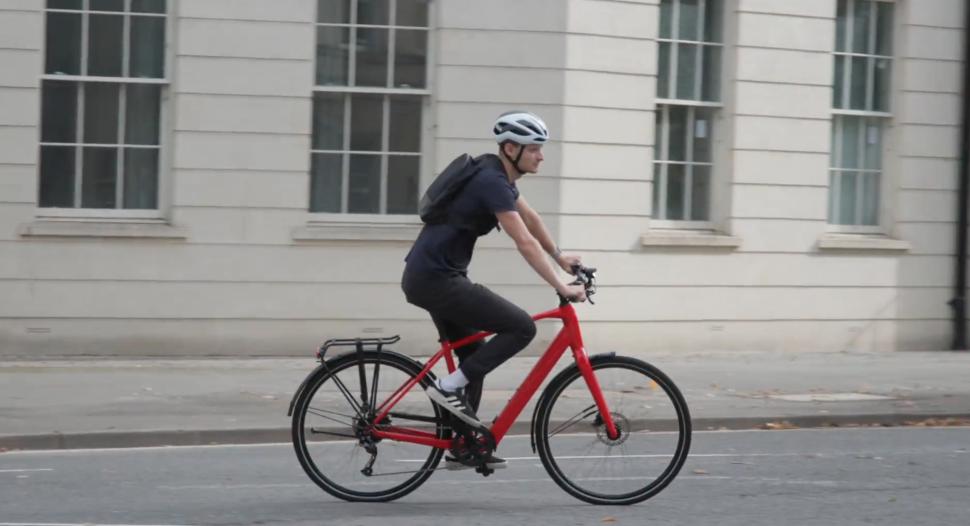
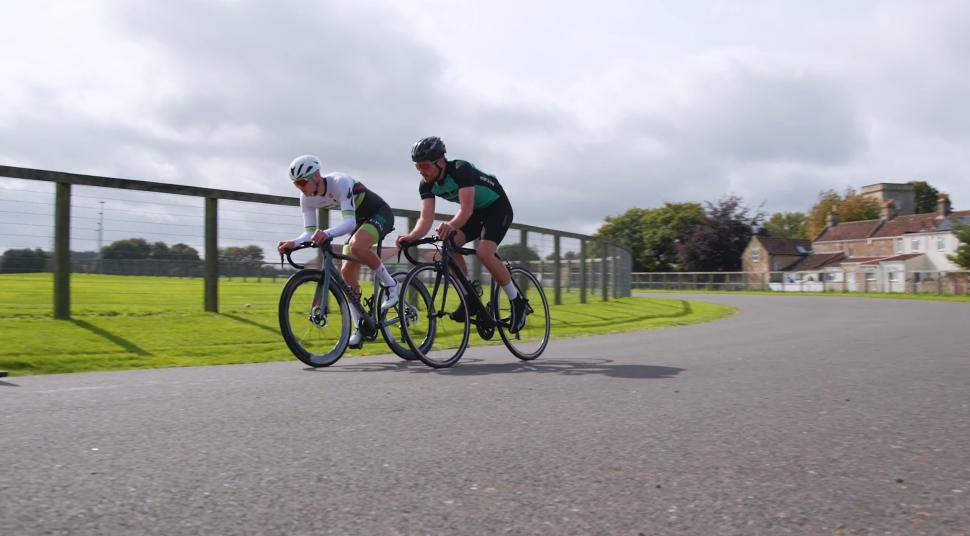


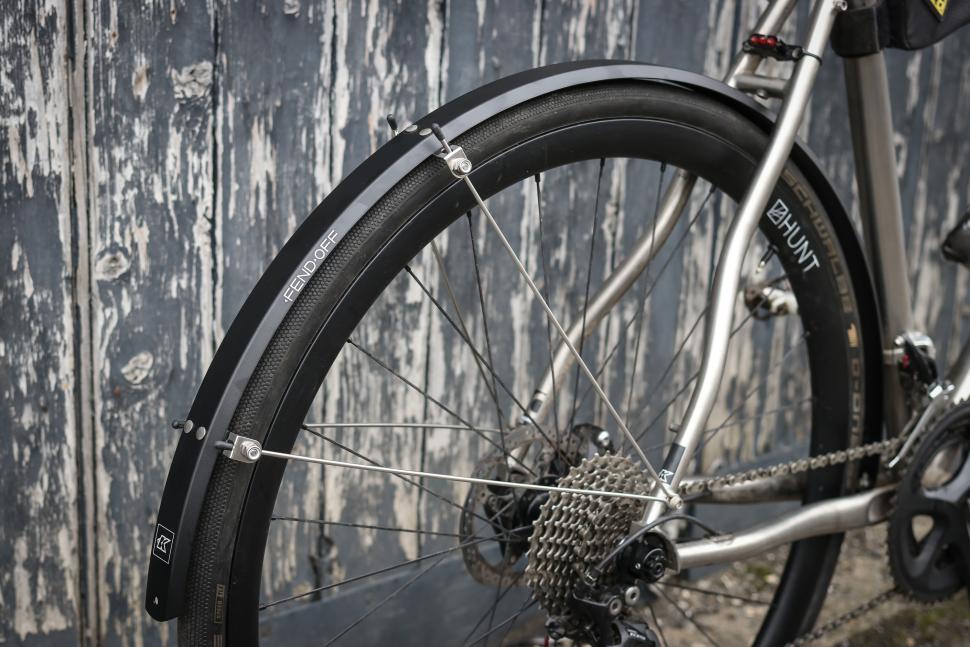

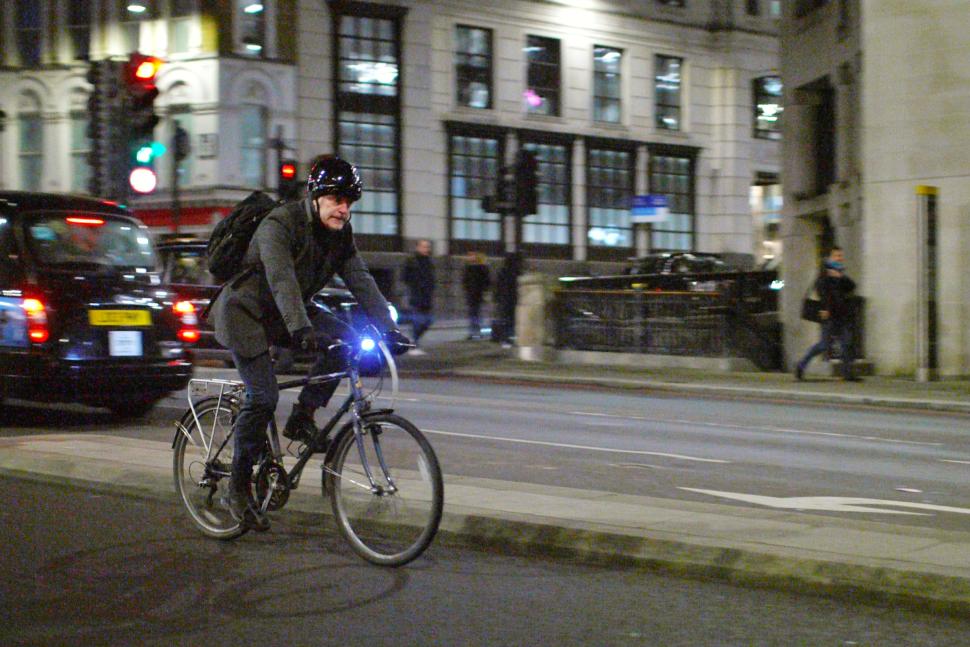
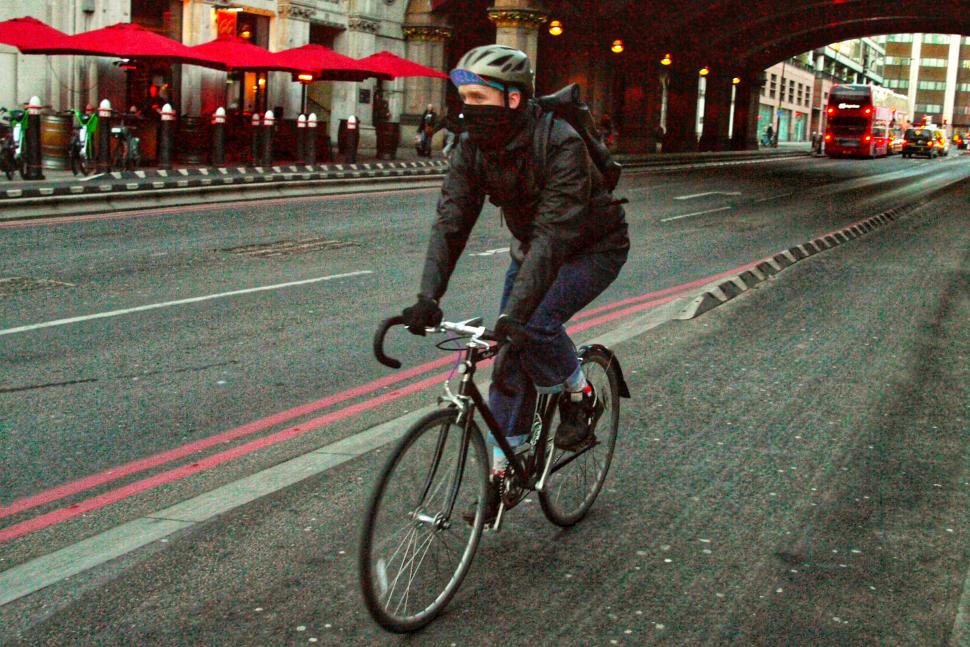
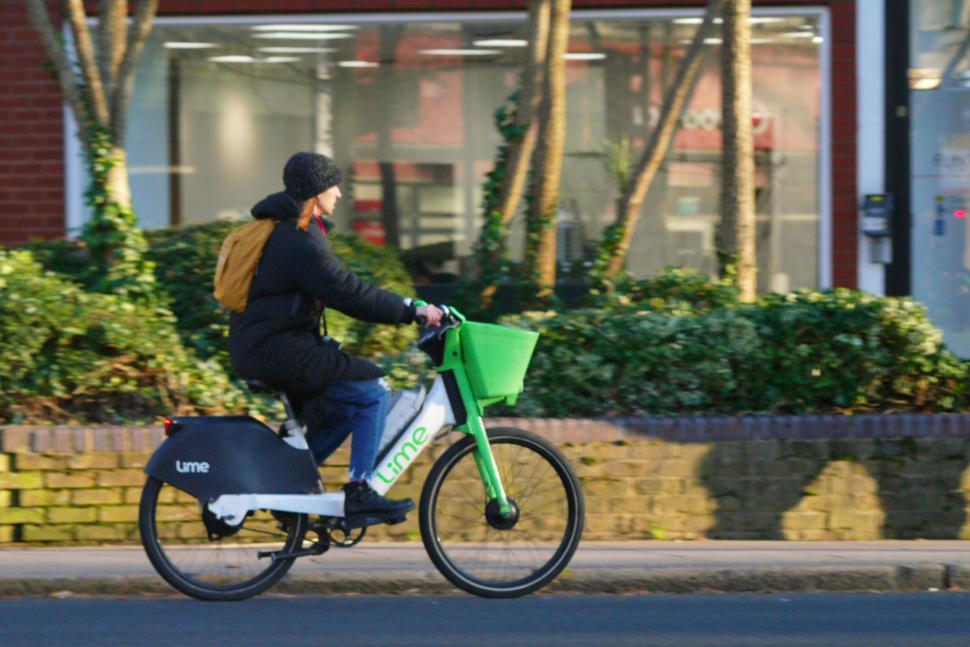
Add new comment
86 comments
Is this you on the 'polar express' ?!
https://www.bbc.co.uk/news/uk-scotland-glasgow-west-68241768
I'm normally on the Edinburgh > Glasgow train.
The morning I did my -7deg commute, the heating in the train was broken.
I was the warmest on the train as I carry a second pannier in winter with a couple of jackets and a body warmer ...
I got those galibier gloves you suggested but it's never been cold enough since they arrived to use them down in the soft south ! I'll have to wait for December!
🤣🤣🤣🤣
Funnily enough... that's the same look people get when ever I say "-7 deg commute" ...
... well, their eyes roll back and they have the look of an extra in a George Romero film 😂😂
I fell down a squirrel-hole after finding that Jack Nicholson image and ended up watching an interesting YouTube essay on The Shining: https://www.youtube.com/watch?v=Qr6PgWFs0Pw
I'd watched all the usual Room 237 conspiracy theories about The Shining and can spot a re-used clip in Blade Runner, but had never realised all the Jack Nicholson glances straight at the camera. It has to be intentional as he's the only character that does it and Kubrick isn't known for a lack of attention to detail. It's quite unnerving and is almost like Jack Torrance is spotting the audience out of the corner of his eye.
(Also watched a theory that the hotel is re-incarnating the murderers which explains discrepancies between character names and historical facts such as the Grady sisters/twins. Also explains the photo at the end with what appears to be Torrance in the Baphomet posture of one arm up and one arm down)
My commute is 21 km, i try to do an average of 5 out of 10 trips by bike each week (the rest by car) - i cycle a Brompton, the advantage being that if i puncture/mechanical , i can fold her and get on the bus ( route i travel has plentiful bus supply) - occasionally with a very stiff wind in my face I'll cheat with 10 km of bus use. The cycle commute is great for fitness, obviously, but so good for mental health too, especially during the pandemic - final note, i always thought my commute distance would be too long in practical terms to use the Brompton, however, my fitness has increased and now I don't think twice about using it.
If you don't mind, I am curious how you find the brompton on that sort of distance?
With it looking more likely we will retain hybrid working with 2 days in the office and possibly only 1 for some time, I am considering cycling more of my commute to avoid busy public transport.
Currently I ride 5 miles to catch a train from a better station with more options, but I am considering swapping to catch the train beyond my awful local roads and ride the rest of the way. I can take my regular bike on the train a few stops in the morning, but the return less so should there be any problem. Hence I have started to think about a brompton which can be folded and taken on train/underground. The route I am looking at would be between 20-25 miles by bike.
I commute 25 km a day. Only sensible ride - a reasonable entry level road bike. Far faster on the flattish route I've got than a 25 kg electric upright monster. With tough, mediocre tyres one puncture per year. So much fun I get up early to do extra miles in summer (and winter). Clothes? Lycra, what else? Stop in a cul de sac a few hundred metres before work and pull on a pair of trousers and a shirt. Finish changing inside. If this is problematic, sort out your problems. Works great for me.
Spend enough money, and you can get an 8.5kg electric road bike
https://road.cc/content/tech-news/hps-launch-lightest-e-bike-world-280881
But even at more reasonable prices, there are electric bikes that aren't 25kg monsters, with more than enough range for commuting. (I don't have one, but I'm tempted.)
Can't see the point myself, but if your problem is a workplace you can't just turn up in in cycling kit, and it sorts that for you, good for you.
Personally I've had commutes short enough it wasn't worth changing at all (variously from a house in town, a park and ride car park, or a rail station), with a gentle cycle not working up a sweat still faster than congested cars, or long enough that I wanted to cool down and shower before changing, not half change by the side of the road. (Every cul-de-sac within hundreds of metres of my office is a car park.)
(At the moment it's rather academic, because our office is closed and we're all working from home.)
1. Only when the tyre sidewall decides to split. Las time it happened I rode the last mile on a flat tyre and got a new tyre brought into work and left the bike ready to fit the new tyre at some point during the shift which was done in 10 minutes.
2. No, rarely see anybody else commuting to work when I do
3. Only when the ride to work was a mile and half and with flat pedal cause of workboots.
4. No, I'm not that stupid.
5. Again a no, shortest route home isn't the fastest. I can go faster by going further and the 2.5 mile shorter route is only 7 minutes quicker.
6. No, they stay on year round.
7. Work clothes stay in work and only come home when I take clean in, never the other way round. Been caught out with underwear once or twice but have a bag in my locker with spares in along with a pair of socks, just in case.
8. Lock stays in work, far too heavy to be hauling that to/from work on a daily basis.
9. It has happened but my kit gets hung up when I change before work and wet kit is hung but spread around more to allow air to circulate and dry it. There have been times when kit has felt damp to touch before I put it on but after a few minutes of wearing it it soon feels OK.
10. Been there but I do ride with extra lights so if one goes the other still has charge and I try and keep them on different charge states so one is 100% and the other is 50%.
Forgetting first and foremost that cycling is supposed to be fun and pleasurable (good exercise, social etc) as opposed to hammering between home and work in all weathers, obsessing about reducing the commute time (route, bike weight) and seeing every motorist as a homicidal maniac that wants to kill you (which is pretty true at commuting times), consequently spending money on video cams to gather evidence if they manage to get you.
“cycling is supposed to be” whatever anybody wants it to be.
You don’t get to decide on my behalf what it’s supposed to be, or how I cycle; in return I don’t get to decide on your behalf.
This article makes bicycling much more complicated than it need be.
Some perspective.
On average a Dutchie will cycle apprx 300 trips per year for 1000km = 3.4km/trip. That's an average though. Many trips are much less and many much more. Almost any trip of less than about 12km round-trip will be taken on a bicycle (or walking + transit) and many people routinely ride much greater distances. Probably 99% of these are in regular street clothes, no helmet or gloves, on basic Dutch Omafiets & Opafiets.
I've often ridden over 50km in jeans & button down shirt. Jeans are completely comfortable on a good upright bicycle. A friend rides from Assen to Gronnengin several days per week - in jeans. School children riding 10km or more is not at all unusual.
Some Dutch do occasionally ride to work in lycra (and I have done so myself) but this is almost always because they want to get in more of a workout.
----
I have ridden all over London (lived in South Kennsington) - in jeans. It is not a problem. Having also begun training rides in London wearing lycra I can say that drivers give much more consideration to me when I'm wearing jeans than when I'm wearing lycra. Lycra & jersey in London seems almost a target for some motorists.
Cycling in London is far more harrowing than anywhere in NL, Scandinavia, Germany or many other countries. London needs better infrastructure.
-----
This over complicating thing seems an english speaking thing. The only people who do it are Brits, Americans and OZies. Why is this?
More thoughts...
Dutch (and most others outside of english speaking countries) don't have to worry about charging lights because the lights are powered by a dynamo. They're always on the bike and always (cough) work. New LED lights seem 100% reliable. Bulbs in older lights would burn out or come loose and if someone only rode in a well lit city then they'd often never fix it.
People sweat much less (usually not at all) when riding an upright bike. Not sure why but it seems known by most people. I don't think it's speed. I tried a hybrid for a while. It wasn't as comfortable, no faster and I sweated more.
Maintenance is not a thing as the drivetrain is fully enclosed. Occasionaly airing tyres is all that is needed. People probably should clean and oil things once every year or two but nobody does.
Some info on bikes & sweating:
https://streets.mn/2018/07/02/dont-sweat-it/
https://www.treehugger.com/bikes/why-upright-right-when-you-are-riding-b...
http://localmile.org/city-bikes/
People sweat less when they ride slower
People ride slower where the road environment isn't hostile to this
People ride upright bikes in countries where the environment is more tolerant of casual cycling.
If I try riding at an easy pace on the road I will be passed by considerably more vehicles and some of those will be very uncomfortable. If I ride flat out, I tend not to have this problem. If I had a segregated route I could ride a more upright bike at an easy pace and not sweat. I don't mind the sewat though as I can shower when I get to work instead of before leaving home, so it makes no difference to me. If anything it probably saves me money on hot water.
Some additions...
Canal towpaths were not built as dog toilets or for having a walk either.
There has been a lot of active travel money from local authorities put into the waterways.
And for that matter the canals themselves were not built for leisure.
I commute every day without any tools or spares whatsoever and have had to walk home once in 19 years -and that was because the chain broke due to aaulty manufacture . Riding a sensible bike and maintaining it properly at home - including making sure the tyre pressures are always OK - goes a long long way to having a dependable bike.
Not sure I've been that lucky, but 3 punctures in 10 years, and a folding bike means for city commuting flagging down a taxi after a puncture is often less hassle. Especially if you are aiming for a specific train.
@nicmason
I agree that towpaths should be ridden at considerate speeds, but does anyone actually tow barges any more? I thought the internal combustion engine put the dampeners on that.
yes but its what they where built for. On the whole they are narrow and if you are walking along one its quite difficult to have bell dinging cyclists whizzing up in fornt and behind you every few seconds exapecting you to get out of the way.
I cycle 13 miles into London every day and tried a tow path once. Not for me.
Yeah, I've only used one once (in London) and decided never to bother in future. Slow and annoying and I _felt_ anti-social just being there.
Plus I kept getting irritated at the existence of boatists. Who are these people? Why do they have all this space allocated to them? What is the purpose of their boating?
Why don't they use the boating lanes, pay tax, wear helmets and hi-viz and they're always jumping red locks...
IMO stay off the towpaths. They aren't there for speedy cycle commuting. If you cycling on a towpth you should be keeping to a moderate pace unless there are absolutely no pedestrians about.
Towpaths (clue in the name) where for barges being towed
"towpath is a road or trail on the bank of a river, canal, or other inland waterway. The purpose of a towpath is to allow a land vehicle, beasts of burden, or a team of human pullers to tow a boat, often a barge."
Most towpaths are not bridleways (horses were not ridden along them), and there's no right to cycle on them. British Waterways -- which manage many of them -- are very understanding and many of them are permissive access for cyclists, but it should be remembered that they are mainly footpaths not bridleways.
No, they're basically open for all use by walkers, horse riders and cyclists. There's a section of wide tarmac towpath near me that actually forms a driveway to a house so it's not uncommon to see a vehicle being driven (slowly!) down it.
British Waterways doesn't exist anymore (except in Scotland where it trades under the name Scottish Canals) - hasn't done since 2012 so everything you've posted there is quite out of date! It's the Canal & River Trust now and the advice on their website is simply about sharing the space responsibly.
Rack + waterproof panniers.
You can easily fit a laptop, U-lock, tools, change of clothes+shoes and arrive at work without a sweaty back. Add some reflective tape to the panniers - make yourself more visible at night.
I carry a "quick" patch kit with me (and a spare tube and mini pump) and have a "slow" kit at work (another spare tube as well) as well as my lezyne mini floor pump, just in case. Extra spare workshop tools at work too, the ones I have upgraded for home use. You never know. And others may welcome your preparedness and knowledge.
Not a user of lycra me, prefer the baggy mountain biker look, but most of it is cycle specific, have to deal with the sweat, the rain and the filth. Fair bit of hi-viz too. And are there any "normal" helmets that I can attach my lights to as well?
My work jeans and trainers live at work, plus a T shirt, just in case I forget to pack one in the bag. (And spare pants and socks if it rains heavily and unexpectedly, if I predict proper rain I put some in my bag too.) Jumper and coat live at work, my cycle stuff is not really warm in off the bike.
Oh, and leave at least one lock at work too, saves weight on the bike, and you might forget the carry around one.
Pages